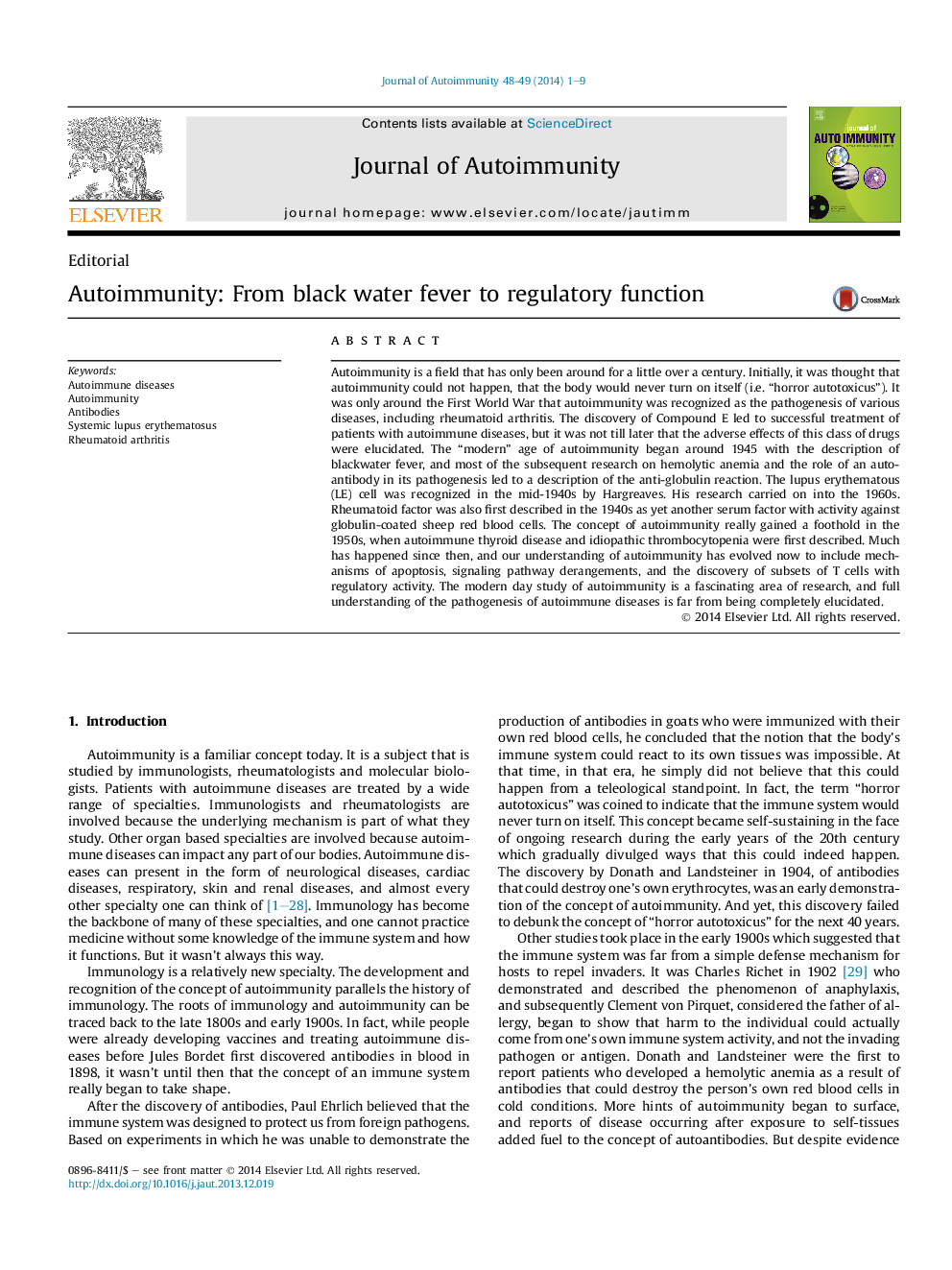| Article ID | Journal | Published Year | Pages | File Type |
|---|---|---|---|---|
| 3367825 | Journal of Autoimmunity | 2014 | 9 Pages |
Autoimmunity is a field that has only been around for a little over a century. Initially, it was thought that autoimmunity could not happen, that the body would never turn on itself (i.e. “horror autotoxicus”). It was only around the First World War that autoimmunity was recognized as the pathogenesis of various diseases, including rheumatoid arthritis. The discovery of Compound E led to successful treatment of patients with autoimmune diseases, but it was not till later that the adverse effects of this class of drugs were elucidated. The “modern” age of autoimmunity began around 1945 with the description of blackwater fever, and most of the subsequent research on hemolytic anemia and the role of an autoantibody in its pathogenesis led to a description of the anti-globulin reaction. The lupus erythematous (LE) cell was recognized in the mid-1940s by Hargreaves. His research carried on into the 1960s. Rheumatoid factor was also first described in the 1940s as yet another serum factor with activity against globulin-coated sheep red blood cells. The concept of autoimmunity really gained a foothold in the 1950s, when autoimmune thyroid disease and idiopathic thrombocytopenia were first described. Much has happened since then, and our understanding of autoimmunity has evolved now to include mechanisms of apoptosis, signaling pathway derangements, and the discovery of subsets of T cells with regulatory activity. The modern day study of autoimmunity is a fascinating area of research, and full understanding of the pathogenesis of autoimmune diseases is far from being completely elucidated.
